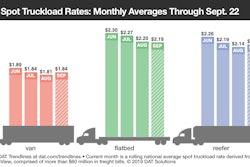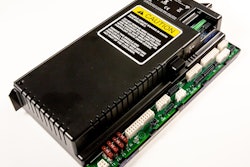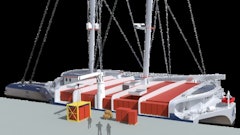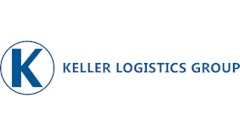
In the supply chain dealing with such sensitive products as food, medicines and modern nanomaterials, even a minor mistake can lead to product spoilage. In the pharma industry, 20% of medicines are damaged due to shattered cold chain processes. Food waste is even worse. According to BCG, in the US alone, 1.6 billion tons of food spoils every year due to the cold chain malfunctions.
RFID and IIoT technologies can help address cold chain issues and make them more reliable and transparent in an industry that craves visibility.
RFID and IIoT: Their role and working principles
As our IoT consulting practice shows, major cold chain inefficiencies are frequently traced back to enterprises not having enough visibility into the location and condition of their sensitive cargo. RFID and IIoT provide access to data and thus eliminate the root cause of cold chain issues.
RFID
Typically, there are three main components in an RFID system: RFID tags, RFID antennas and RFID readers.
In the cold chain, predominantly passive RFID tags are used – they are smaller, cheaper and more mobile. These tags do not have power supply and should be powered by the energy from RFID readers to transmit data.
RFID antennas (typically integrated with the RFID readers) supply the energy for the tags and forward the data from the tags back to the readers.
RFID readers are used to read the data from the tags. A reader takes in a radio signal from RFID tags, converts it into digital information and sends it to the cloud platform for further processing (together with the data about the location of the reader and the time of the reading).
IIoT
IIoT uses a network of connected sensors attached to product packages, warehouse shelves and vehicles to track the conditions in which sensitive products are stored. Along with it, the cloud platform – a core of an IIoT system – provides storage and analytics capabilities for both RFID- and sensor-generated data. The IIoT system takes in RFID and sensor readings, runs them through analytics algorithms and visualizes the findings in the form of dashboards, reports, real-time product location maps, etc. In addition, IIoT systems use web or mobile applications to enable communication with users, for example, alert warehouse staff if the temperature at a warehouse approaches a critical threshold.
Read Next: The Top 3PLs & Cold Storage Providers of 2019
The Parameters to Track
RFID and IIoT help to maintain product quality at all cold chain segments and provide the opportunities to monitor:
Product locations and movements
RFID is used to track sensitive products at manufacturing and storage facilities and establish when the cargo leaves or arrives at a particular facility. Whenever RFID-labeled products pass RFID readers installed at the key points of a factory or a warehouse, the tags are automatically scanned and located, and the locations of the corresponding products are automatically updated in the data base.
To create an even more coherent tracking network across the cold chain, RFID can be paired with GPS. GPS can keep track of vehicles transporting cargo, establish where a particular vehicle is in its delivery cycle, and estimate when it is likely to get to a destination point. Also, when a manufacturer outsources logistics operations, a logistics company can collect GPS data from vehicles involved in the transportation of products and share it with the manufacturer.
Properties of individual product packages
With RFID and IIoT in place, inventory specialists can drill down any parameter to get a well-rounded view of the products on hand. They can learn, for instance, that out of 1,000 packages of SKU X, 200 have less than 30 days till expiration. Now, when an inventory specialist receives an order for SKU X, they choose the packages with the closest expiration date and ship them first.
Product storage conditions
To preserve the quality of sensitive cargo, temperature and humidity sensors can be attached to the warehouse shelves or the inner sides of refrigeration units in which products are stored and transported. As a result, the manufacturers get access to up-to-the-second information about the ambient parameters affecting the shelf life of sensitive products.
A case in point
Let’s consider the example of how RFID and IIoT can be applied for optimizing cold chain operations in the dairy industry.
Say, a dairy enterprise has a new batch of brie cheese manufactured. The cartons of cheese are packaged with each package getting an RFID tag. The tags’ IDs are correlated with the data about the packages they are attached to (the number of cartons in the package, the date of production, the location in a warehouse, etc.) and saved to a cloud data base.
When the enterprise receives a new order for, say, 1,000 cartons of cheese, an inventory specialist uses a web or mobile application to:
- Check if the required number of cartons is available.
- Check which packages have less time till expiry, so that they can be sent to distributors first.
- Quickly locate the required packages in a warehouse (row, shelf, etc.).
Warehouse workers pick the packages and transport them to the shipping area of the warehouse. At the exits of the shipping area, RFID readers scan the RFID tags attached to the packages and check if all of the requested packages are being shipped. Due to the integration of an IIoT solution with an order management system, the shipping is automatically recorded in it upon scanning.
Read Next: Requirement for Energy Efficient Refrigeration Equipment to Push Innovations in North America
The packages are put in vehicles, each vehicle equipped with a temperature and humidity sensor. The sensors will provide data about the condition of the cheese en route, notify drivers of the need to adjust the ambient parameters, and inform the driver and the manufacturer whenever transportation conditions are violated.
On the way, a vehicle’s GPS tracker updates the manufacturer and distributor about the location of the vehicle involved in the delivery, so that they can dynamically track the status of the shipment.
The Benefits of the Connected Cold Chain
The data obtained through RFID and IIoT makes cold chains more streamlined and drives the following improvements:
Waste prevention
Forty percent of all perishable products never make it to the customers, which is a large amount of waste. Provided with detailed, real-time information about the storing and shipping conditions of sensitive cargo, manufacturers can take preventative measures to save the products and considerably reduce waste.
Optimized inventory management
The more detailed data about product locations and properties is available to the inventory specialists, the more likely they are to have the right products at the right time in the right place. As a result, they can lower the amount of perishable cargo on hand, still being able to meet customer demand at the end of the cold chain.
Lower operational costs and better customer service
The application of RFID and IIoT in the cold chain makes inventory management more comprehensive. Timely alerted about shipping delays and the violation of ambient parameters, manufacturers can dynamically manage cold chain issues to reduce operational costs and increase the quality of customer service.
Things to keep in mind
Nothing as massive as the connected cold chain comes without challenges. Resorting to technology-driven solutions, enterprises should keep in mind the following points:
- Implementing a connected cold chain can be time- and effort-intensive, and rolling out the technological infrastructure required for the connected supply chain implementation usually involves substantial investments. Therefore, the cost of products to track or the cold chain optimization potential should be high enough for the solution to pay off.
- Some RFID tags may encounter collisions when scanned simultaneously. So, enterprises should carefully consider the conditions the tags will be used in to choose the tags of optimal frequency, and deploy RFID readers with an appropriate coverage and reading rate.

















